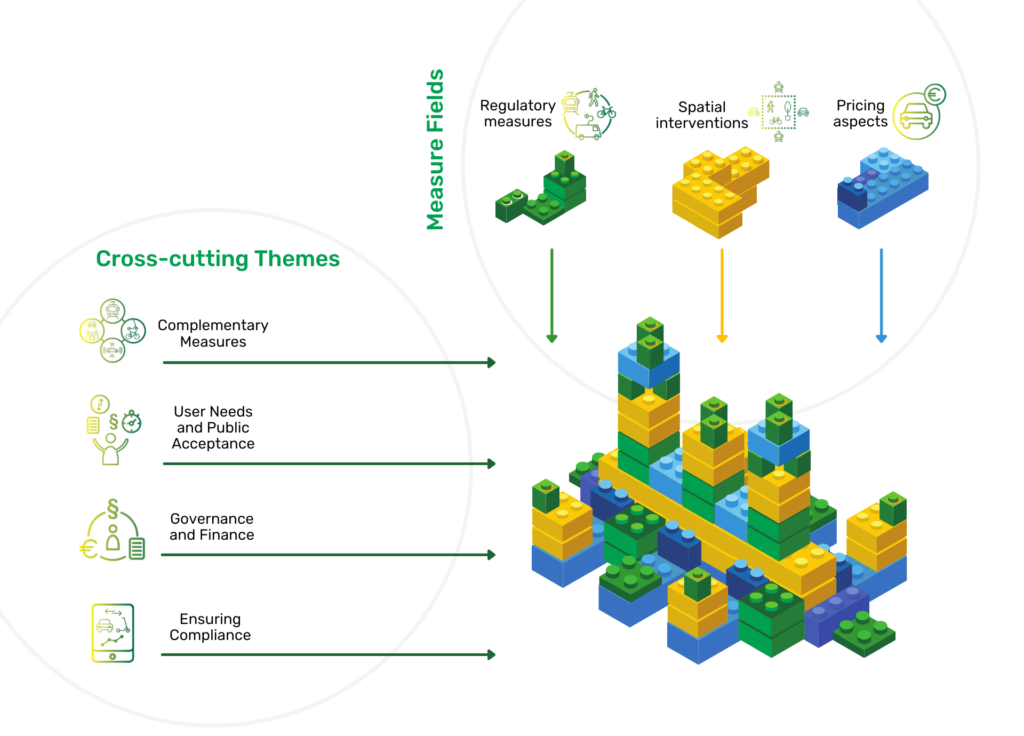This website uses cookies so that we can provide you with the best user experience possible. Cookie information is stored in your browser and performs functions such as recognising you when you return to our website and helping our team to understand which sections of the website you find most interesting and useful.
Our Approach
There are three main mechanisms to implement an UVAR and we have named them “Measure Fields”.
Within these Measure Fields, the different aspects are further split into Building Blocks as outlined below:
- Spatial interventions
- Pricing aspects
- Regulatory measures
Spatial interventions are where the road layout has been altered to favour more sustainable mobility and prevent vehicles from entering.
Examples of these are removing road and parking space taken for vehicles and using the space for sustainable mobility or amenities (bus lanes, logistics hubs, parklets, restaurants, and more).
Traffic filter:
Reallocating parking space:
Reallocating road space for pedestrians:
Reallocating road space for cycling:
Reallocating road space for public transport:
Pricing aspects are when the entry to an area or to the entirety of the city is given a price tag to encourage more sustainable transport.
Pricing aspects also include the (differential) levels of penalty fees to encourage (and enforce) compliance.
Road charges/tolls:
- Charge applied to a perimeter or an area (congestion charge)
- Charge applied to specific points
- Distance-based charge
- Time-based charge
- Permit charge
- Charge based on emission standards (pollution charge)
Parking charge:
Regulatory measures are those where there is a legal instrument that states who can and cannot enter an area.
They could often also be called 'bans' and include Zero Emission Zones, Low Emission Zone, and Limited Traffic Zones.
Regulation by emissions:
Regulation by vehicle type and dimensions:
Regulation by trip purpose:
Regulation by permit:

There are also aspects that are common to all UVARs. ReVeAL has grouped them into four topics, named “Cross-cutting Themes“: Supportive Mobility Measures, User Needs and Public Acceptance, Governance and Financing and Ensuring Compliance. More details on these cross-cutting themes can be also found in our Guidance page.


